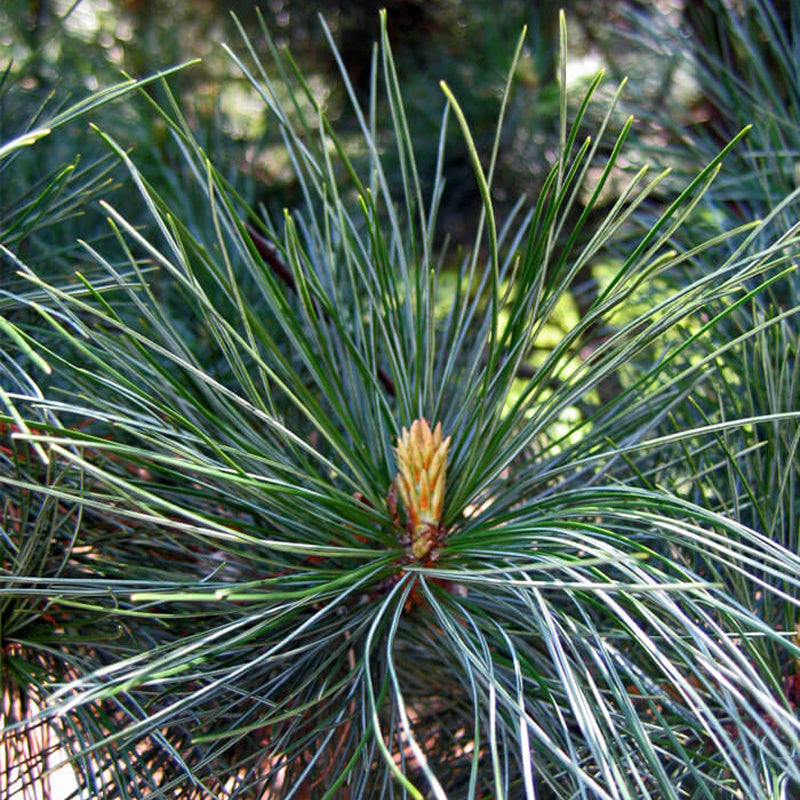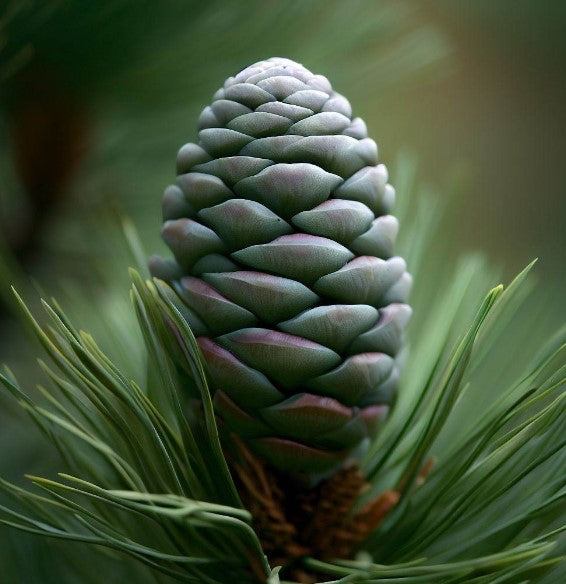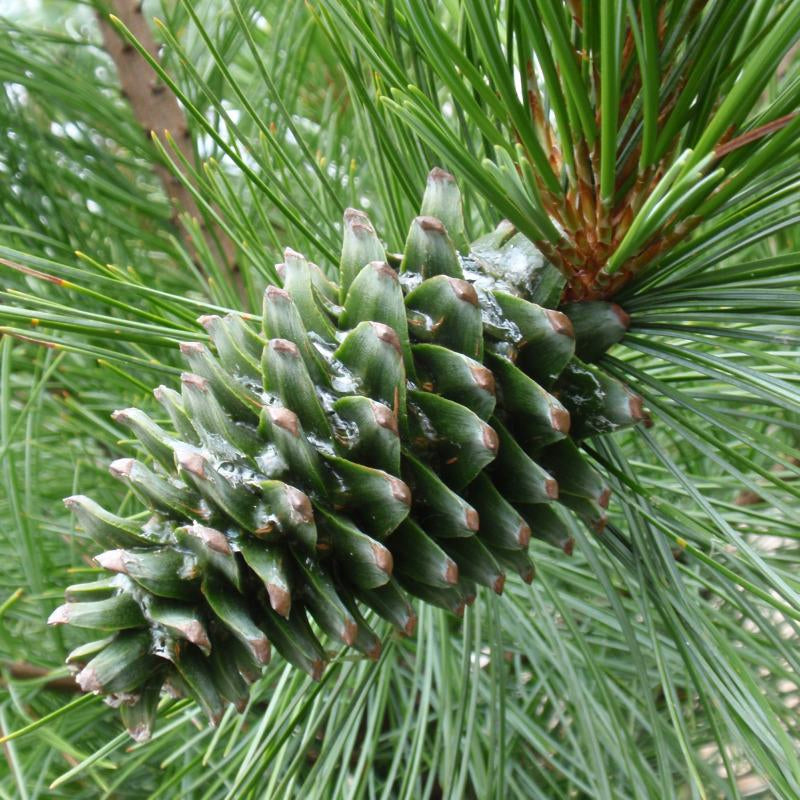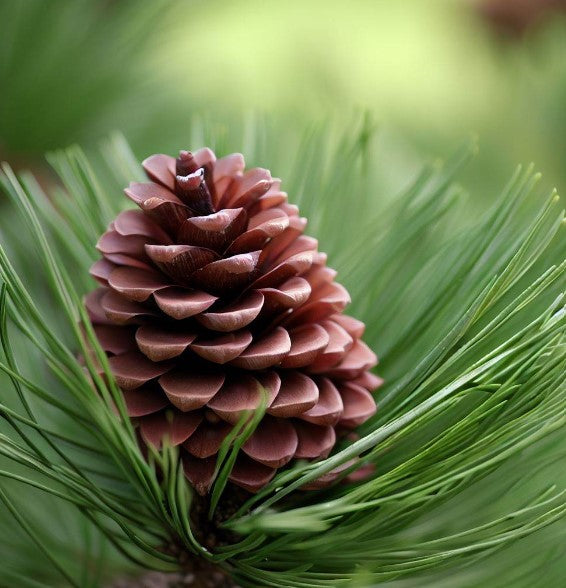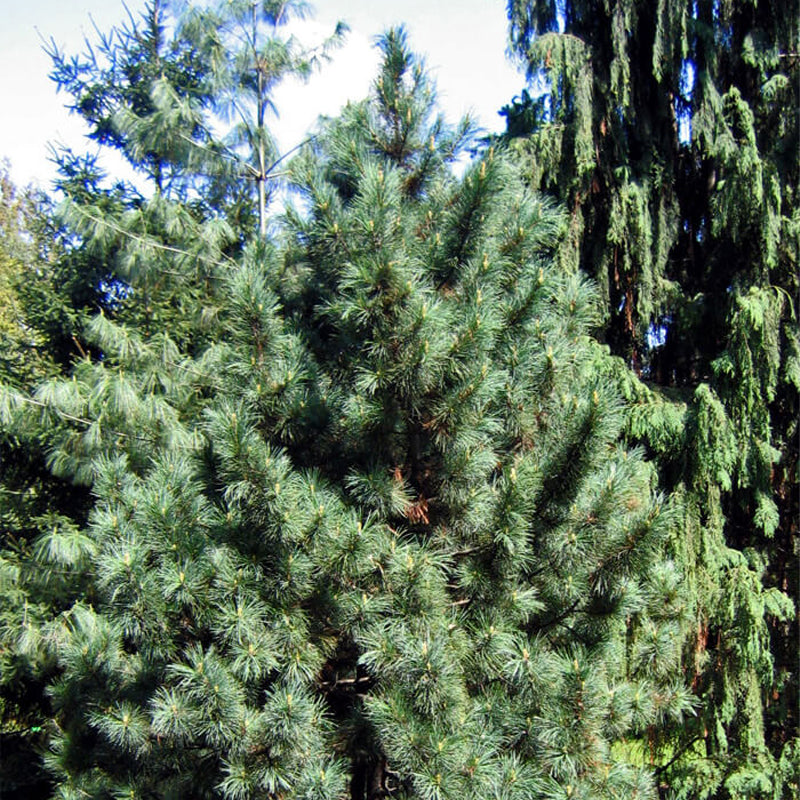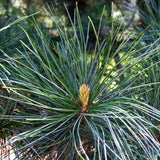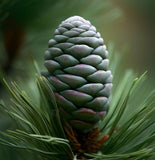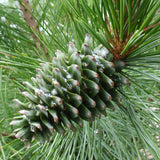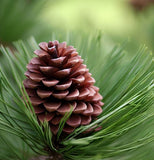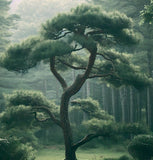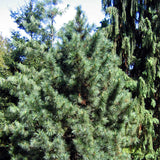Pinus koraiensis (Korean Pine)
Pinus koraiensis (Korean Pine) is a species of pine tree native to Northeast Asia, particularly the Korean Peninsula, northeastern China, and eastern Russia. It is named after its primary region of origin, Korea. It is a slow-growing, evergreen coniferous tree that can reach heights of 50 to 100 feet (15 to 30 meters) with a spread of 20 to 40 feet (6 to 12 meters). It has a pyramidal crown when young, which becomes more rounded with age. The bark of mature trees is thick, rough, and grayish-brown in color.
The needles of Korean Pine are long and slender, measuring around 3 to 5 inches (7 to 13 centimeters) in length. They are arranged in bundles of five, and their color can range from dark green to bluish-green. The tree produces small, ovoid cones that are typically reddish-brown in color. These cones contain edible seeds, known as Korean pine nuts, which are widely used in culinary applications.
Korean Pine is well-adapted to cold climates and can tolerate a variety of soil conditions, including sandy, loamy, or acidic soils. It prefers full sun to partial shade and can be found in mountainous regions, often growing in mixed forests or as an understory tree.
This species has economic and ecological importance in its native range. Korean Pine is valued for its wood, which is used in construction, furniture, and pulp production. It also plays a significant role in the ecosystem by providing habitat and food sources for various wildlife species.
In addition to its practical uses, Korean Pine is often cultivated as an ornamental tree for its attractive form, dense foliage, and interesting bark texture. It can be planted in gardens, parks, and larger landscapes where suitable growing conditions are provided.
Korean Pine is considered a culturally and economically important species in the regions where it is native. Efforts are being made to conserve and sustainably manage its populations due to the potential threats of deforestation and overharvesting.
Overall, Pinus koraiensis, the Korean Pine, is a visually appealing tree with its distinctive form, long needles, and edible pine nuts. It holds ecological significance and has practical uses in various industries.
Botanical Name : Pinus koraiensis
Common Name : Korean Pine
Height : 100 ft
Spread : 40-50 ft
Germination Info : Seed requires 60 days warm moist stratification followed by 90 days cold moist stratification
Hardiness zone : 2-7
Other info : Seed germinates best when in the presence of light so lightly cover when sowing.
Average seed per ounce : Approx. 50


